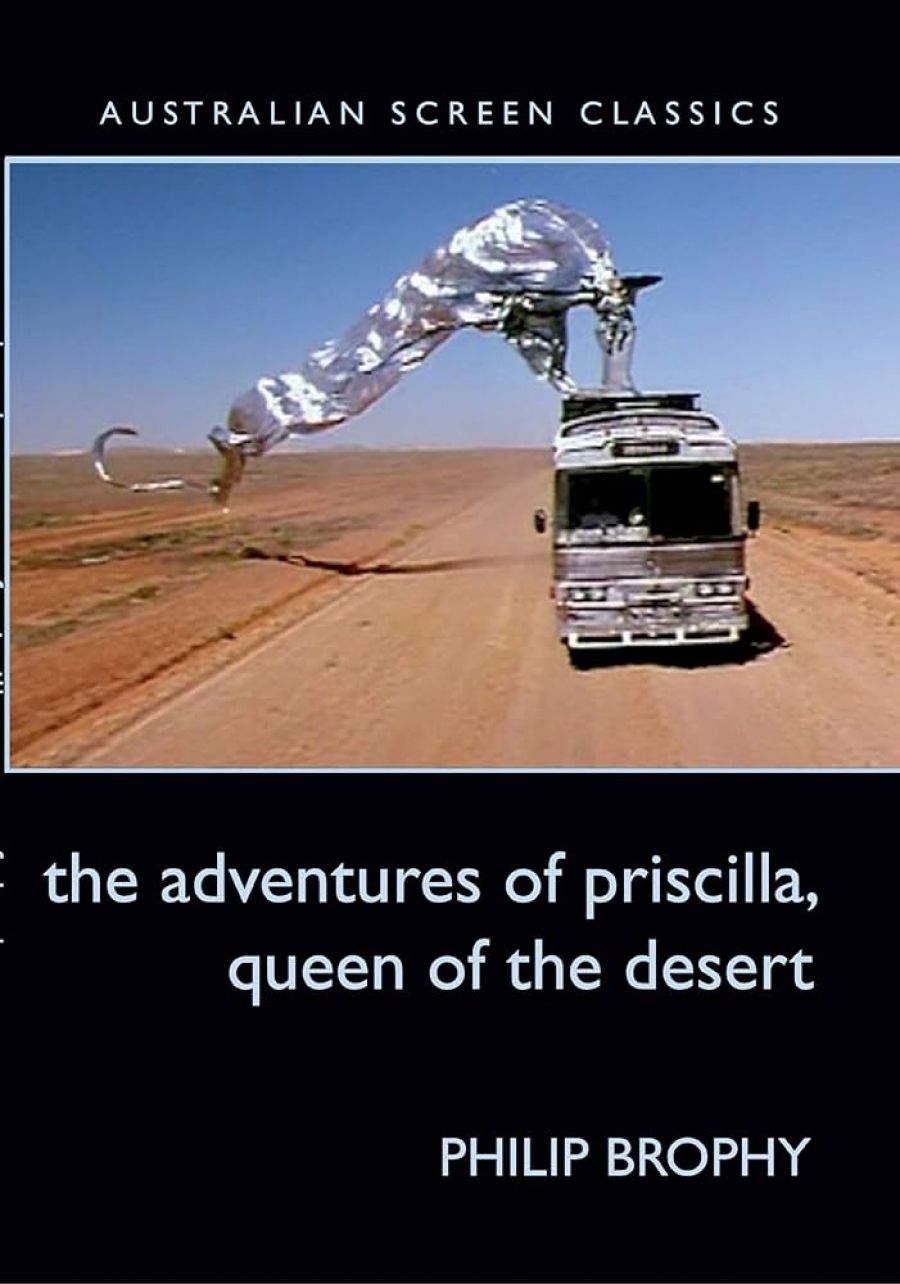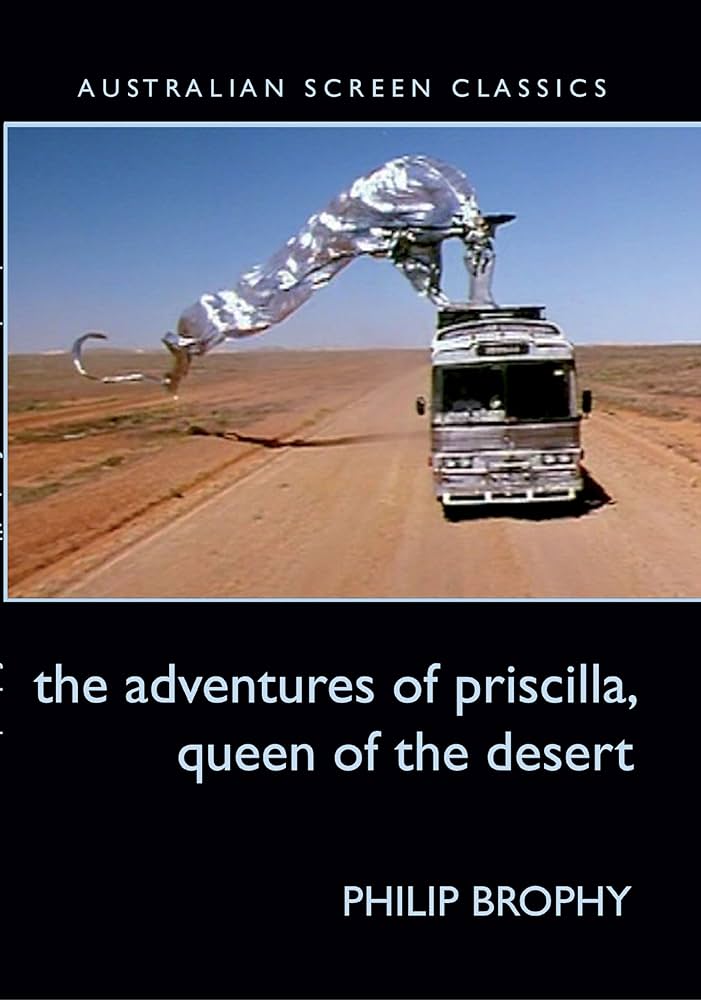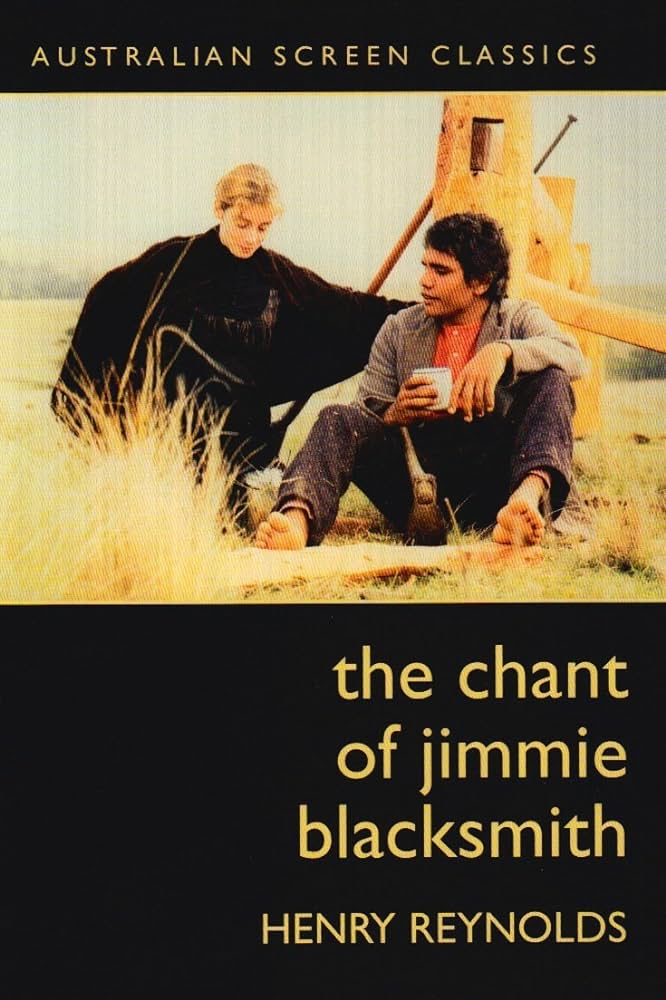
- Free Article: No
- Contents Category: Film
- Custom Article Title: Re-ambiguate the positive
- Review Article: Yes
- Article Title: Re-ambiguate the positive
- Online Only: No
- Custom Highlight Text:
Possibly inspired by the British Film Institute’s ‘Classics’ texts, the ‘Australian Screen Classics’ series is not only downright valuable but also looks good. The latest two, in their smart black covers, each adorned with a striking still from the relevant film, confirms the importance of having such detailed attention paid to key films in our history.
- Book 1 Title: The Adventures of Priscilla, Queen of the Desert
- Book 1 Biblio: Currency Press, $16.95 pb, 96 pp
- Book 1 Cover Small (400 x 600):

- Book 1 Cover (800 x 1200):

- Book 2 Title: The Chant of Jimmie Blacksmith
- Book 2 Biblio: Currency Press, $16.95 pb, 88 pp
- Book 2 Cover Small (400 x 600):

- Book 2 Cover (800 x 1200):

Reynolds has a firm grasp on the three narrative levels in the telling of Jimmie Blacksmith’s horrific and tragic story. First is the true story of Jimmy Governor, on whom Blacksmith was based; this was followed in 1972 by Thomas Keneally’s novel, a reworking of the Governor story; and then Schepisi’s film, somewhat ambiguously credited as being ‘from the novel by’ Keneally.
Reynolds’s discussion of Jimmy Governor’s story is riveting. It offers compelling insight into what being part-Aboriginal meant in the late nineteenth century: how valuable Aboriginal labour was to farmers and pastoralists, how well educated Jimmy was by comparison with white settlers’ children, how close he was to tribal roots, how much his horrifying story was imbued with revulsion at the idea of a black man’s union with a white woman. Governor’s marriage to Ethel Page is related with a clear-eyed sympathy touchingly at odds with the racist hostility one assumes it generated at the time. The violent killing spree on which Governor embarks coincides with the upsurge of nationalism, institutionalised in Federation, after which, Reynolds notes, the fear of ‘half-castes’ escalated.
Keneally’s austere and passionate novel, which Reynolds the historian probably undervalues, falls into halves: the first renders Jimmie Blacksmith’s aspirations to make his way into the white man’s society, while the second chronicles his ‘war’ and flight following the revenge he has taken for rebuffs. Schepisi was a friend of Keneally’s. Reynolds claims, ‘Clearly it is the integrity of the novel which took priority over the actual people and events’. This encapsulates Reynolds’s chief critical line: Keneally’s book sought to make of Jimmie a kind of hero in the Ned Kelly mould, with like legendary status.
Reynolds treats the film as ‘the Keneally–Schepisi account’, attributing to them jointly the problem of making a hero out of the raw material of a mass murderer. In noting discrepancies between the film and the history, Reynolds doesn’t adopt a patronising patrician attitude to the film: he simply (and complexly) approaches it from another viewpoint. In his longest chapter, ‘The Rampage of the Blacksmith Brothers’, he works his way carefully through the film’s treatment of this, allowing its historical veracity in, for instance, matters of production design, while lamenting other more crucial departures. ‘Many old, dangerous and discredited ideas stalk the film as surely as the vigilantes stalked the mismatched brothers,’ he claims, drawing particular attention to the film’s confusion about what it meant to be a half-caste as compared with the ‘true’ Aboriginal, Jimmie’s half-brother Mort.
His discussion of this section of the film attests to Reynolds’s alertness to how it is working as a film, but I think it fair to say that he doesn’t allow enough scope for the filmmaker’s – or novelist’s – interpretative freedom, or for the liberal motives behind their exercise of this. With perfect honesty, his view of the film is filtered through his historian’s training: that gives the book real value and, for some, will account for its limitations.
Filmmaker Philip Brophy, probably still best known for the cult horror movie Body Melt (1993), presents a provocative take – or a series of takes – on Stephan Elliott’s The Adventures of Priscilla, Queen of the Desert (1994). Brophy’s book scarcely constitutes an introduction to the film: it almost counts on the reader’s having done some serious thinking about the film before coming to grips with what Brophy offers. You are not in for, say, an auteurist reading or a cultural studies contexualisation.
The prologue announces at once an idiosyncratic stylist. Dissociating himself from conventional readings of the film, he proclaims firmly: ‘My purpose is to re-ambiguate Priscilla.’ (Did he make up ‘ambiguate’? I’ve never heard it before, but certainly plan to use it again.) What emerges is not a clear, linear reading of the film, but ‘more an assessment of the signs circulating within the movie’. Those with fond memories of Priscilla as an exhilarating road movie cum camp extravaganza should prepare to re-affection-ate those memories on different grounds.
The study opens with an analysis of the image of Shirl, the outback pub habitué whose crude homophobia attracts from one of the three drag queens the famous riposte about the only way she’ll get a bang. Brophy writes: ‘[Shirl’s] oral gape is the glassy eye of the film’s sociological hurricane: a raging whorl of misogynist energy that spins around this charade of a butch dyke.’ Thus, he locates the way the film goes about ‘the silencing of women’, and goes on to interrogate its representation of gays and women and ‘Malestralia’. His unifying motif is the concept of ‘reading a map’ of early Australia: the film is as unconducive to a collective liberal reading as those early maps were misshapen when they tried to come to terms with the white sense of a new land mass.
Brophy undermines notions of Priscilla as a feel-good film. It may, he claims, ‘flaunt gay visuals, but every time the conflicted queens open their mouths, the film reveals itself to be as macho as the Victorian Bitter advertisements’. That is an example of the kinds of contradiction that Brophy sees feeding into the film’s tortured generic and ideological complexities and confusions. As a musical, he finds it undercut by its ‘unrelenting nihilism’, fired by ‘self-loathing’ as this ‘labyrinthine text’ is. Does that sound like the Priscilla you remember?
One of the strengths of the book is its wildly eclectic intertextual references. Brophy’s achievement is to make Priscilla seem a richer experience by his wide-ranging excavations beneath the film’s gaudy surface. The book constitutes an attack on the liberal mouthpieces of Australian culture whom he would dismiss for their homogenising labours which suppress dissident elements in the cause of identifying a collective ‘Australiana’ at work.
Brophy’s language, sometimes over-ornate, won’t be to everyone’s taste. The illustrative stills are smaller than one would like and a bit muddy; and there are surprising typos. Maybe you’d like a clearer guide through the film’s journey, but you won’t often have so many stimulating landmarks pointed out along the way. Not having seen Priscilla since it first appeared in 1994, I now feel that I only half-watched it and have less-than-half-thought about it since.


Comments powered by CComment